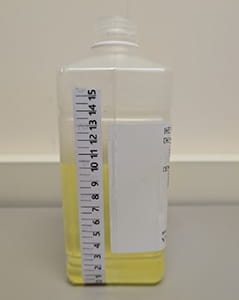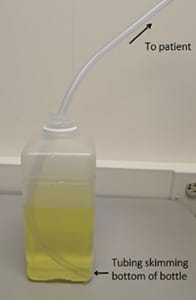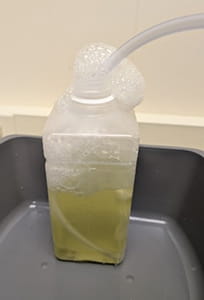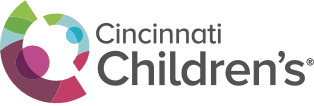What is Bubble PEP (Positive Expiratory Pressure)?
PEP stands for Positive Expiratory Pressure. Bubble PEP is a treatment to help children who have a buildup of mucus in their lungs and to expand their lungs. It is often done with people who have cystic fibrosis (CF) or who have just had surgery.
During treatment, your child will be encouraged to blow big bubbles into the water and out of the bottle. This creates positive pressure back up the tubing and into your child’s airways and lungs. This pressure holds open your child’s airways and moves mucus from the smaller airways into the larger airways. From here, it can be coughed up (cleared).
Bubble PEP Equipment
- One-liter bottle with water
- Liquid dish soap
- Tape measure
- Tubing (two feet in length)
- Tray / basin
- Food coloring (optional)
Preparation
- Fill a 1L bottle with water to create 10cm of depth (about 3.9 inches) and add liquid dish soap. Optional: Add food coloring if you want colored bubbles.
- Put the tubing into the water so it just skims the bottom of the bottle. Do not let the tubing coil in the bottle.
- Put the bottle into a tray or bowl to collect bubbles.


Performing Bubble PEP Treatment
- Ask your child to take a breath in and then blow out through the tubing into the water to create bubbles. They should breathe out as long as possible. Aim to get the bubbles out of the top of the bottle each time—it may be messy and should be fun!
- Repeat this for 15 breaths or a max of two minutes. This is one cycle.
- Ask your child to huff (forced expiration technique) and cough to clear the mucus, as taught by your respiratory therapist. Encourage your child to cough the mucus out rather than swallow it.
- Repeat steps 1-3 to perform a total of six cycles or a max treatment time of 15 minutes.
- The tubing, bottle and tray should be washed out and left to air dry on a disposable towel. Store in a clean place until the next treatment. The bottle and tubing should be discarded after one week and replaced as needed.

Considerations
- Make sure the bottle is placed below your child’s head and the tubing is held upward to prevent your child from breathing in the water.
- Your child might try to inhale through the tubing instead of only exhaling into the tube. Watch your child carefully and move the tubing away from their mouth immediately if your child tries to inhale liquid.
- If your child gets tired during the treatment, take breaks as needed.



